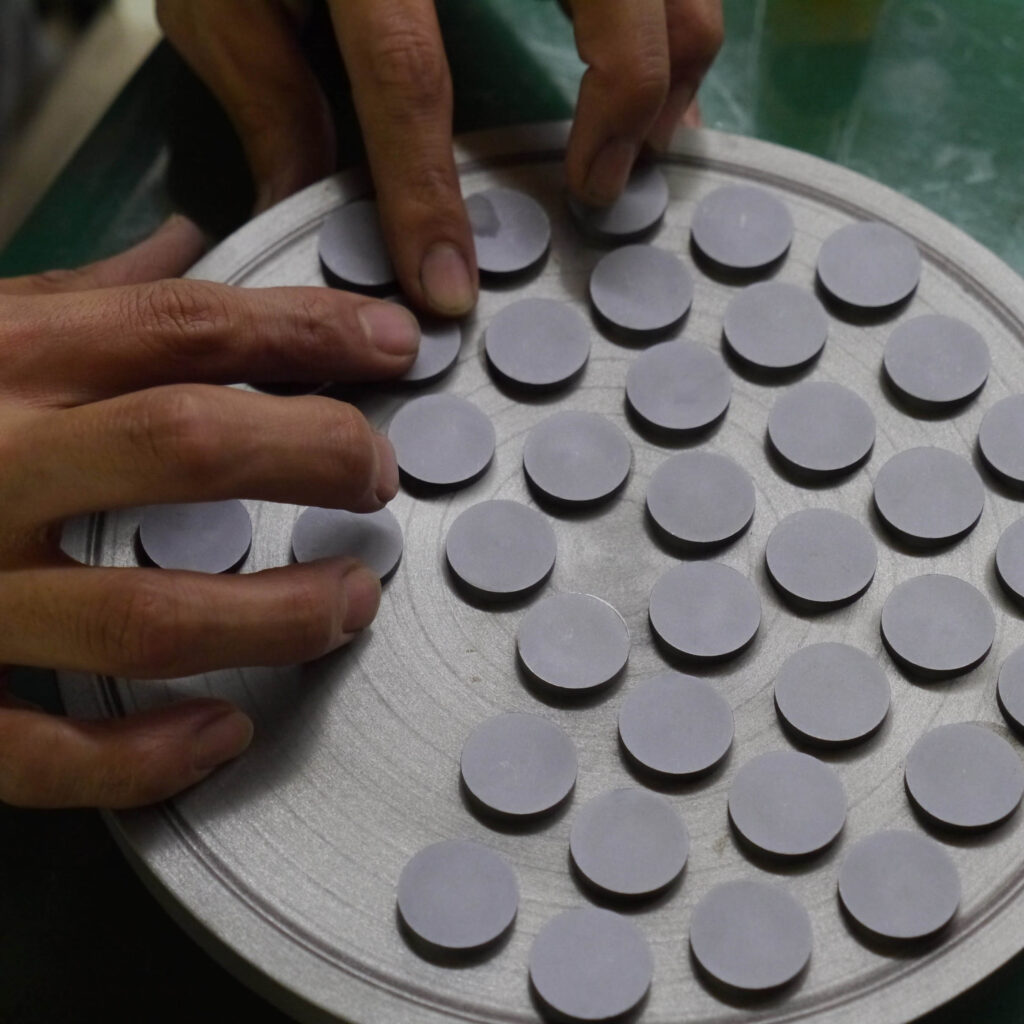Precisely arranging diamond pellets

Once ground close to the specified curvature, an optical element is carefully polished in two stages to the required design shape. This polishing is done by lapping the optical element with a polishing plate that is curved in the opposite direction of the optical element. The two surfaces lap one another because one is concave and the other convex. The optical element eventually takes on the profile of the polishing plate surface, so the plate must be highly precise. In the first polishing stage referred to as “smoothing,” many small round diamond pellets are attached to the polishing plate. The above photograph shows the pellets being placed on the polishing plate.

The diamond pellets are each curved slightly differently and arranged uniformly across the bowl-like polishing plate so that the overall curve that they form serves the desired concave or convex shape of the optical element. The polishing plate is wider in diameter than the optical element, so a percentage of the attached pellets contact the optical element at any given time. To efficiently polish, the optical element is spun like a top while it is moved about the inside of the plate, but it must always contact the same number of pellets no matter what path it follows. So, misplacing the pellets even to a small degree will affect the profile precision of the optical element.

By enhancing curvature precision and working to keep the thickness within a roughly 2/100 mm tolerance, a transparent texture of the optical element is obtained. It is absolutely essential when polishing an optical element to the precise curvature with no distortions from the center to the edge that the diamond pellets be accurately arranged on the polishing plate. This job has no diagrams or guide tools. The only thing specified is the number of pellets that go on each plate. So, how is it done? First, you calmly place five pellets around the center. Then, you determine inside your head a formation of five areas that are evenly spaced apart in the radial direction and, in one quick swoop, fill in those areas. This particular approach is just one example. The most suitable method for arranging the pellets differs according to the size and profile of the polishing plate. So, like chess masters, polishing professionals have a large number of standard moves.